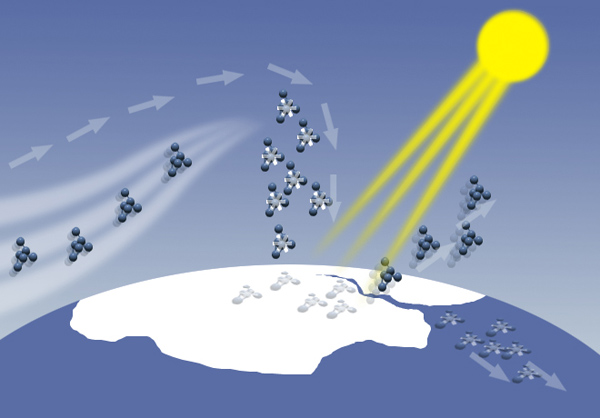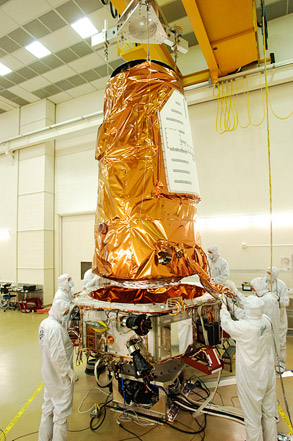The Chemistry of Snow - by Christoper Boxe
Thursday, August 21st, 2008
This graphic illustrates the path of ozone-damaging molecules at Earth’s poles. Image credit: NASA-JPL
Remember the warning to beware of yellow snow? Well, what’s true in your backyard is true on a much larger scale too. (For those from warmer climates, yellow-tinted snow is a sign that a dog or other animal has recently “paid a visit.”)
Snow at Earth’s north and south poles can also be tainted. Certain molecules — ones that can eventually damage our protective ozone layer in the stratosphere, affect the air down in the troposphere where we live, and possibly contribute to climate change — are being deposited into the snow.
Just how is this happening? Start with the fact that air at lower latitudes circulates toward the poles. This air carries ozone-damaging molecules picked up in industrial, highly populated areas. Once over the poles, some of these molecules are deposited onto the snowpack, where they migrate to thin liquid films in snow. Once sunlight hits the snow, the light energy breaks down these molecules, which are then released back into the atmosphere, giving the area over the poles a double hit of ozone-damaging molecules.
Scientists are finding that snow has unique properties that make these chemical reactions happen much faster than we used to believe. We don’t fully understand why this is happening, but we know that the mixture of sun (an energy source) and snow bring about the release of these ozone-damaging molecules into the atmosphere much faster than in areas without snow.
Many of the polluting molecules that remain in the snow eventually get incorporated in the polar food chain. When the snow melts into the sea, the molecules may be ingested by sea creatures. Not all of them are unhealthy, but some of them are.
Why care about reactions going on in distant, frozen expanses at Earth’s poles? Those regions are a beacon of climate change, where we see chemical processes that may play a large role in the planet’s future.

























